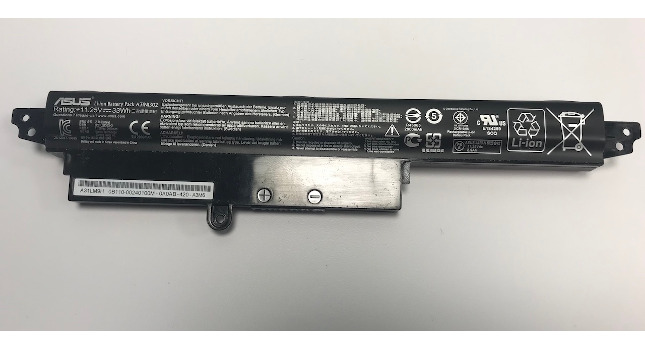The livelihood of manufacturing is production efficiency. Despite knowing this, the production, operation, maintenance, design, and marketing data necessary for making sound business decisions are not well integrated with business processes or business applications. For manufactures that have to maintain production plants, a strategy exists called asset lifecycle management (ALM) or process lif...
The livelihood of manufacturing is production efficiency. Despite knowing this, the production, operation, maintenance, design, and marketing data necessary for making sound business decisions are not well integrated with business processes or business applications. For manufactures that have to maintain production plants, a strategy exists called asset lifecycle management (ALM) or process lifecycle management (PLM). Despite the acronym, ALM is exciting, so I won’t bore you with the marketing definition, I’ll save that for later. If you just remember these three words, you’ll do just fine — integrate , reuse , and share .
The business benefits and return on investment (ROI) from ALM can accrue in five categories:
-
Capital project savings
-
Manufacturing cost savings
-
Information technology cost savings
-
Improved organizational efficiency
-
Increased revenue.
-
Knowledge sharing
Industry must focus on both the short-term and the long-term effects of daily decisions, causing a strong paradigm shift in the way the value chain integrates and collaborates. When a project is underway, whether it is upstream during the creation of a new asset, or downstream for an extension of an existing plant, all of the key players must be able to share, capture, reuse, and leverage each other’s outputs. Not only for the short term, but also for the long term, storing all of the data is crucial in capturing knowledge and turning it into best practices. Without capturing this data, every time an employee retires or quits all of that tacit knowledge leaves as well.
Currently, there is a strong emphasis on the yearly capital expenditure for new assets and equipment within plants. This, however, is not where the most emphasis ought to be made in order to make a substantial impact. The focus should be on how, during each critical process that occurs, theses processes are optimized, streamlined, and enhanced by technology. It does not matter if these processes include information handover, plant asset operations, asset monitoring, maintenance processes, or health, safety, and environmental processes. The current business misalignment is evident by the way the current business units have created technological and process silos and isolated “islands” of efficiency. ALM breaks down the technology silos that have hindered interaction between the people who design, operate, and maintain production assets. This strategy enables many facets of project teams to operate as a single entity with suppliers, joint venture partners and customers, by sharing common business processes and product knowledge from initial concept through development, into operation, and ultimately to retirement.
The motivation for a long-term strategy revolves around four main business drivers including economic, work force, technology, and business globalization pressure.
Operating as a single entity across the value chain drives efficiencies of communications, reduces cycle time and rework, improves project performance, and ultimately reduces operating and maintenance expense over the life of the capital asset. These are some of the objectives that today’s industry leaders have identified as the core underlying pillars of ALM.
Capital project savings
By enabling collaboration and information management between contractors, suppliers, and owner/operators during all phases of a capital project from asset development (appraise, design, and build) to handover and commissioning, ALM can reduce the cost of capital projects 5%—15% and reduce the time of construction 10%—20%. The quality of the design can also be improved 5%—30% by ensuring the use and leveraging of best practices throughout the design and construction phases.
These benefits are achieved by leveraging and linking assets and specifications with reusable, routine, automated workflow processes; reducing rework and content recreation by providing enterprise-wide access to real-time, virtual libraries of intellectual capital, collateral, assets, and specifications; and by reducing redundancies and expediting costs by providing synchronous project visibility and coordination for all parties involved in the project.
Manufacturing cost savings
By integrating manufacturing systems with business applications and providing robust and personalized intra and inter-enterprise collaboration linkages, ALM can significantly reduce the cost of manufacture. By creating tighter integration, visibility, and collaboration between production planning, operations, sales, and business managers, ALM can better align plant asset performance with business objectives. Resulting savings and cost reductions can include improved planning and scheduling effectiveness by 60%—90%; increased right-first-time (RFT) rate by 50%—70%; and reduced maintenance costs by 20%—40%.
End users can expect these significant benefits due to a variety of reasons, including a reduction in unscheduled shutdowns through improved predictive and preventive decision capabilities and reduced time to repair and replace. Production efficiencies will also be improved through better production planning and improved process control decision-making.
Information technology cost savings
Integration of the complex and disparate systems and IT infrastructure that exists in most manufacturing enterprises can be time consuming and costly. However, technologies and capabilities are available that can mitigate both of these issues. ALM is being designed to enable the integration (and often consolidation) of a firm’s existing IT systems and infrastructure. Resulting savings can be in the range of 30%—60% for the integration and on-going operating cost savings of 15%—25%. Additional savings may also accrue through outsourcing or on-demand options.
Improved organizational efficiency
ALM is also focused on improving the efficiency and utilization of human assets as well as physical assets. This focus is especially critical in light of the “aging of the workforce” in industry and the downsizing that has taken place over recent years.
By creating robust linkages between all business systems and sources of data, by enabling access by all elements of the organization to the data, and by creating a robust collaborative environment for the organization, ALM provides the capability for the organization to convert the data to information, to share knowledge across the enterprise, and to enable better and more timely decisions. In essence, ALM enables an organization to do more, to do it better, and to do it with fewer resources.
Increased revenue
Everything that has been discussed previously will improve the responsiveness and capability of the enterprise to better serve its customers. Having intra and inter-enterprise collaboration and knowledge-sharing capabilities will enable customers to have a better experience when dealing with the enterprise and will improve business relationships. The net result will be seen as increased revenue; however, it is always difficult to correlate cause and effect when it comes to revenue generation. How, and if, an enterprise chooses to attribute revenue generation to ALM can be debated. However, it cannot be debated that ALM will have a positive impact on revenue generation. The pitfall and the steps to take to get started are intertwined. With such a large reach, ALM can easily be misconstrued as another one of those multimillion dollar, decade-long consulting engagements. The focus from the very beginning should be to look at the roadmap and lay out the architecture that needs to be set in place. With those two key elements locked in and agreed to by all the C-level executives and line of business executives a small, clearly defined proof of concept must be established with clear milestones. A measurable ROI must also be agreed to. Only then, step by step, can the win strategy roadmap be filled out.
There are also different starting points, even though the end result will be the same. The most preferable approach will be the aforementioned services lead assessment and diagnostic workshop approach. The second will be starting from a particular application component and building outward. The third approach is the middleware focus or the backbone of overall ALM implementation.
“PLM/ALM strategies should combine customer-facing, portfolio and project management, and formulation applications. Starting with point applications as a way to promote business improvement makes sense, but make selections which support your larger PLM strategy,” according to PLM for the Business of Chemistry by Shawn Fitzgerald and Kevin O’Marah, AMR Research.
ALM is a strategy that utilizes existing products to integrate existing business systems and data sources to create a collaborative infrastructure that enables efficient management of assets, both physical and human. ALM enables the integration of inter and intra-enterprise capabilities and technologies linking “data” from existing systems with existing business processes and applications and making it available as “information” to the right people in the organization at the right time in the right format securely.
Vendors offers a range of comprehensive ALM applications and services. Partner with a vendor that can identify and qualify the core changes that will drive improved business performance and then implement the organizational, process, and technology solutions that will enable and institutionalize those changes. Some of the more advanced vendors’ offerings include process assessment tools, ROI models, pain-point diagnostics, solution mapping, consulting services, software partnerships, technology integration, and training/implementation services.
Author Information Mr. Clambaneva is the marketing manager for IBM’s Asset Lifecycle Management solutions. Prior to his current role, he was a PLM consultant for IBM’s Engineering Consulting & Services Practice of IBM Global Services. Mr. Clambaneva is a member of the Institution of Mechanical Engineers (IMechE of England) and a member of the Industrial Designers Society of America. He received his Bachelors in Mechanical Engineering from the University of Warwick in the United Kingdom and his Masters in Manufacturing Management from Pennsylvania State University. He can be reached at 212-745-3674 or [email protected] .



